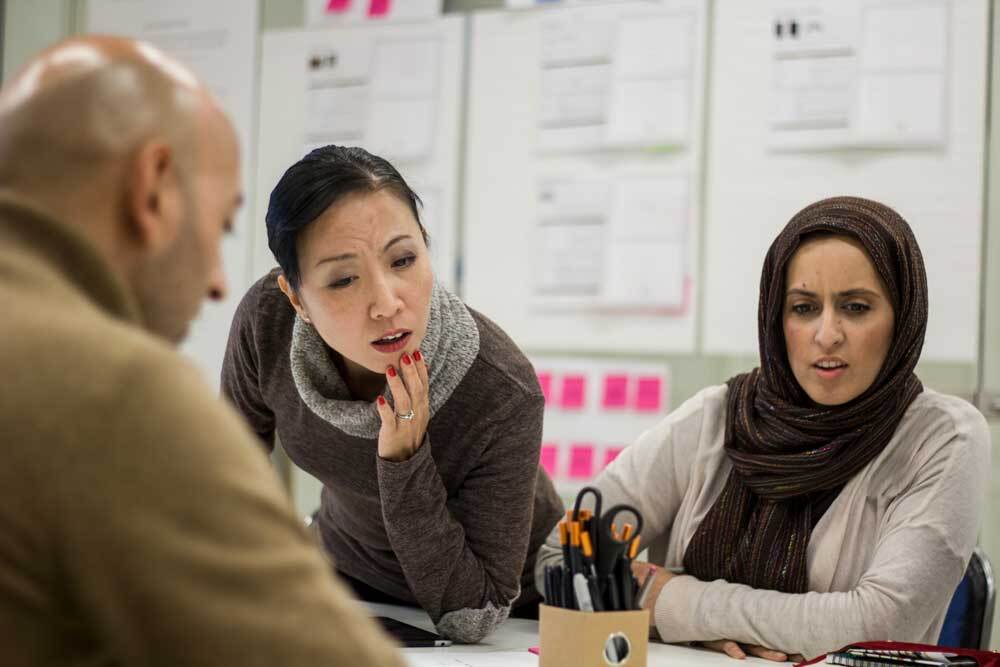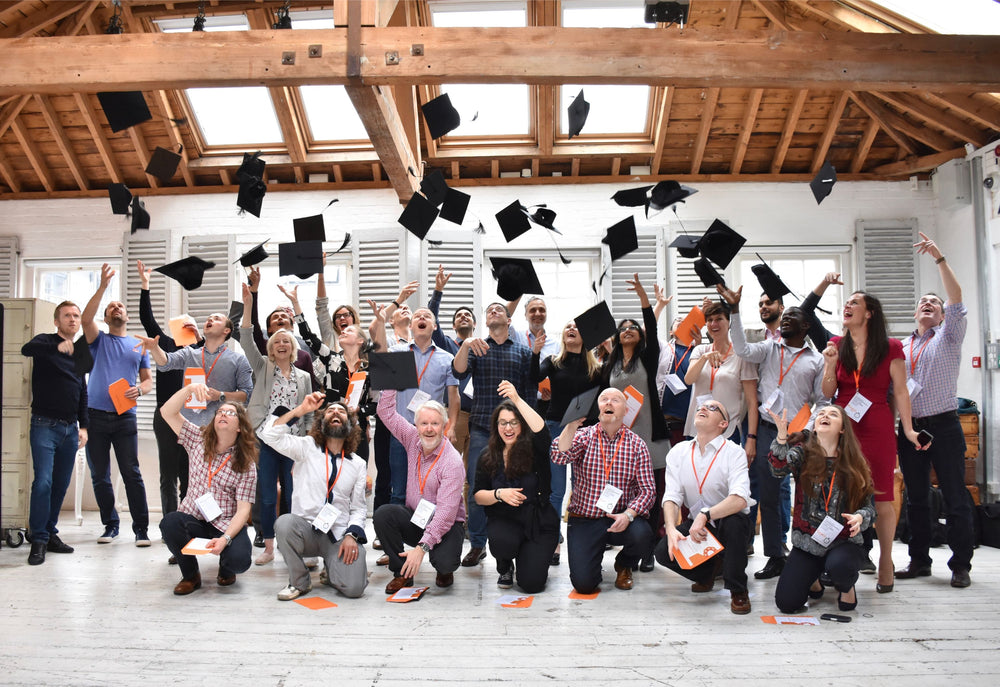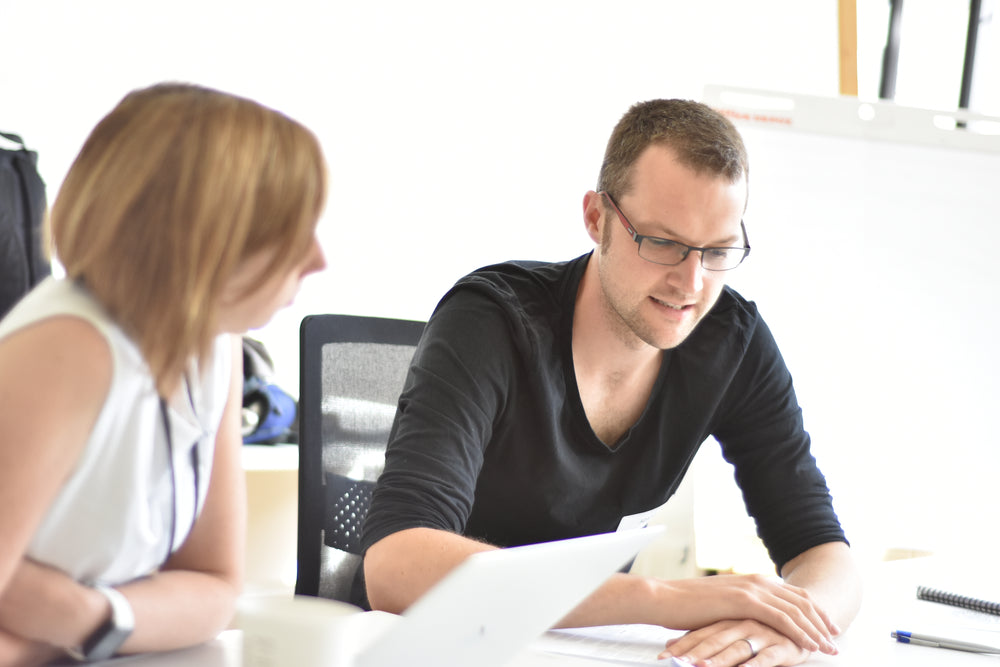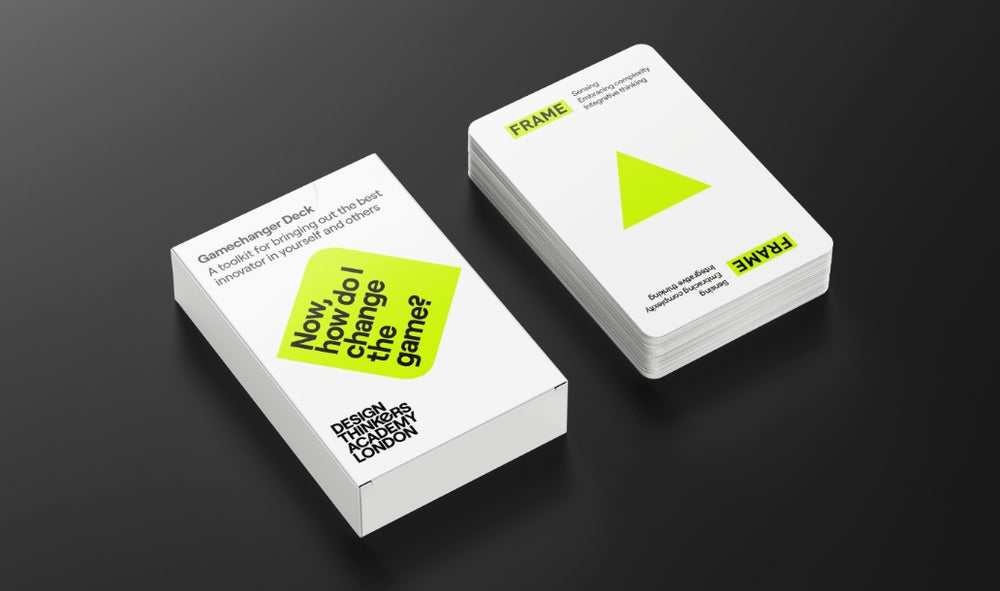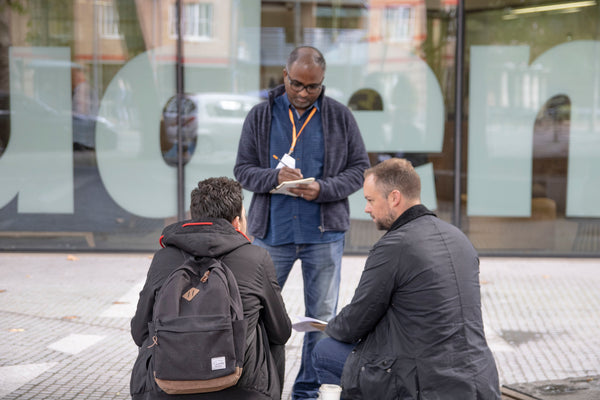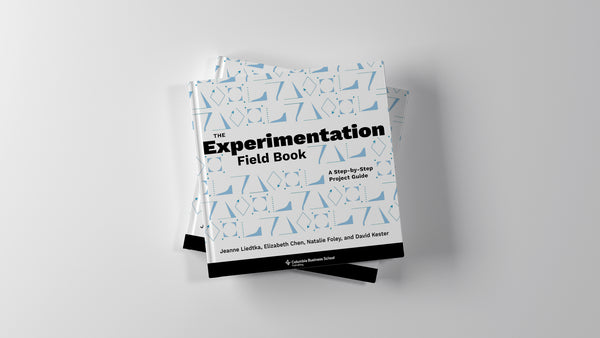“You know sometimes people think it’s just a trendy thing to have, this thing called design thinking. I’ve been convincing them otherwise that it works. We’ve proven that it works.”

For Aileen Deasy, going on a Design Thinking Facilitation course seemed the next logical step on an innovation journey, that had started just a few years earlier. Working for the Seafood Innovation Hub (SIH) at the Irish Seafood Development Agency, for years she had observed industries such as beef and dairy develop with innovative products and ingredients. Realising that at BIM (her organisation’s acronym name, due to its Gaelic name Bord Iascaigh Mhara) they were “very technical, without looking at other lenses like financial viability and desirability,” Aileen and the team decided that they needed a “more structured innovation approach, in a very traditional industry.” So, they launched an innovation strategy as part of a complete culture change; with design thinking at the forefront.
Irelands Seafood Development Agency, "helps to develop the Irish Seafood Industry by providing technical expertise, business support, funding, training and promoting responsible environmental practice." It was here that they began "changing the way we engaged with the industry." This was after they realised there was a “huge opportunity to apply an innovation framework to different parts of this industry, to help extract more value and to capitalise on opportunities.”
On a “steep learning curve”, with an innovation structure growing around her, Aileen decided she needed to take her skill set to the next level. This was part of a desire to validate what she was doing: “to see if I could get better and improve my own techniques and confidence around facilitating.”
This led her to Design Thinkers Academy London’s Facilitation Course. For Aileen, “it sounded perfect. I couldn’t believe it. I thought they had written this course for me, because it had all the things I needed in detail. It was a perfect match for me.”
Once on the course, it was a case of expanding upon what tools she knew, whilst more importantly developing her facilitation skills. Practicing how you engage with and energise others when running a workshop is a key element of the training. Aileen explains “some parts I found I was quite comfortable in. In other parts I was more challenged”. Overall, the course led to a “serious boost in confidence,” and a “reassurance that what I was doing was the right thing”. This included the new tools and techniques that Aileen picked up over the two days.
One such tool was the opportunity statement which “frames the problem, to turn a problem into an opportunity.” This framing then, in itself, started to frame the way Aileen and her colleagues began to work. “When I came home, we immediately started using the opportunity statement and we’ve been using that ever since.”
This way of working was not just for Aileen, but has spread into the customer desirability, technology and financial teams too. Aileen “circulated all of the tools” when she returned. All of this then went on to play a significant role in one big challenge facing BIM.
“I’ll give you the story of blue whiting.”
Aileen explains, “we have this fish called blue whiting. We have lots of it, but we do very, very little with the fish. In fact, over 75% of it goes directly to fish meal: the lowest value. It goes into a factory where it’s processed, and it becomes a base for pet food. It’s not in the human food chain, even though the fish itself is actually a perfectly edible fish, related to cod.” Using some of the facilitation skills she had learned and the tools from the course they worked together on an opportunity statement:
"Given that new technology has been developed to process blue whiting into different formats, how might we help these processing companies develop new markets and help them get new customers to purchase new formats from Ireland, so they can increase revenue sales and jobs in the northwest of Ireland?"
This immediately “helped us to focus, and it helped the clients to understand what area we were working in. It also helped our team and people that are not directly within our team, to understand what exactly we were going to do”.
The next stop was on UK and Spanish shores, as members of Aileen’s team used another key part of design thinking – ethnography. In the UK and Spain “they observed fish buying: what kind of people were buying this type of fish? We learned a lot from that, and we got a persona” – another key design thinking tool. The project is currently on-going but already “one company is thinking of investing in the machinery and we have since tested some products in Spain and the feedback is extremely good”.
For Aileen, this is just the beginning, “it’s completely changed the way that we work at the SIH. We’re all becoming real experts in the process and the (Facilitation) course certainly helped me to deliver effective workshops in a short space of time. I would say to anyone that has a project where you’re doing something new or different, you have to really trust the process. If you apply the tools properly, the process does work. You can quickly fail on a project if you don’t have that structure, spending a lot of unnecessary money. By having this structure in place, it really does prevent bad investment choices. It saves your clients from investing in the wrong area”.
For Aileen and her team, this is just another step on the journey; one where design thinking is offering a clear path forward, whilst also hopefully offering a clear path for others too.
“I could recommend this course for anybody involved with innovation projects.I’ve been referring to Design Thinkers Academy a lot.”

